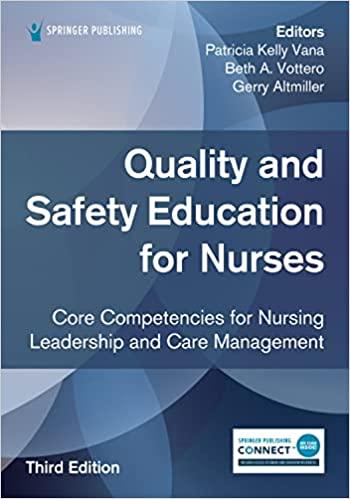The improvement team in the opening scenario conducted medical record reviews and many interviews with nurses and
Question:
The improvement team in the opening scenario conducted medical record reviews and many interviews with nurses and other interprofessional staff on the preoperative and postoperative units, operating rooms, and the post-anesthesia recovery unit. The team identified that the physician orders for many postoperative patients returning to the unit did not state why the urinary catheter was needed, that the nursing staff didn’t question why, and that these patients often had indwelling catheters for the duration of their hospital stays. The team also learned that the decision to insert an indwelling urinary catheter was based on the physician’s discretion since the hospital did not have a standard protocol to guide who needed a catheter.
1.
What CUES (Assessment), using the RE-AIM framework, can the nurse and the improvement team assess about adoption of the indwelling urinary catheter protocols?
2.
What HYPOTHESIS (Diagnosis) can the nurse and the improvement team make about causes of improper catheter use from their initial findings?
3.
What ACTION (Plan and Implement) will be most effective for the nurse and the improvement team to take to ensure that use and management of indwelling urinary catheters provides safe quality patient care?
4.
How could the nurse and the improvement team evaluate the OUTCOME (Evaluation) of the team’s work for determining the effectiveness of the urinary catheter protocols?
Step by Step Answer:

Quality And Safety Education For Nurses Core Competencies For Nursing Leadership And Care Management
ISBN: 9780826161444
3rd Edition
Authors: Patricia Kelly Vana, Beth A. Vottero, Gerry Altmiller






